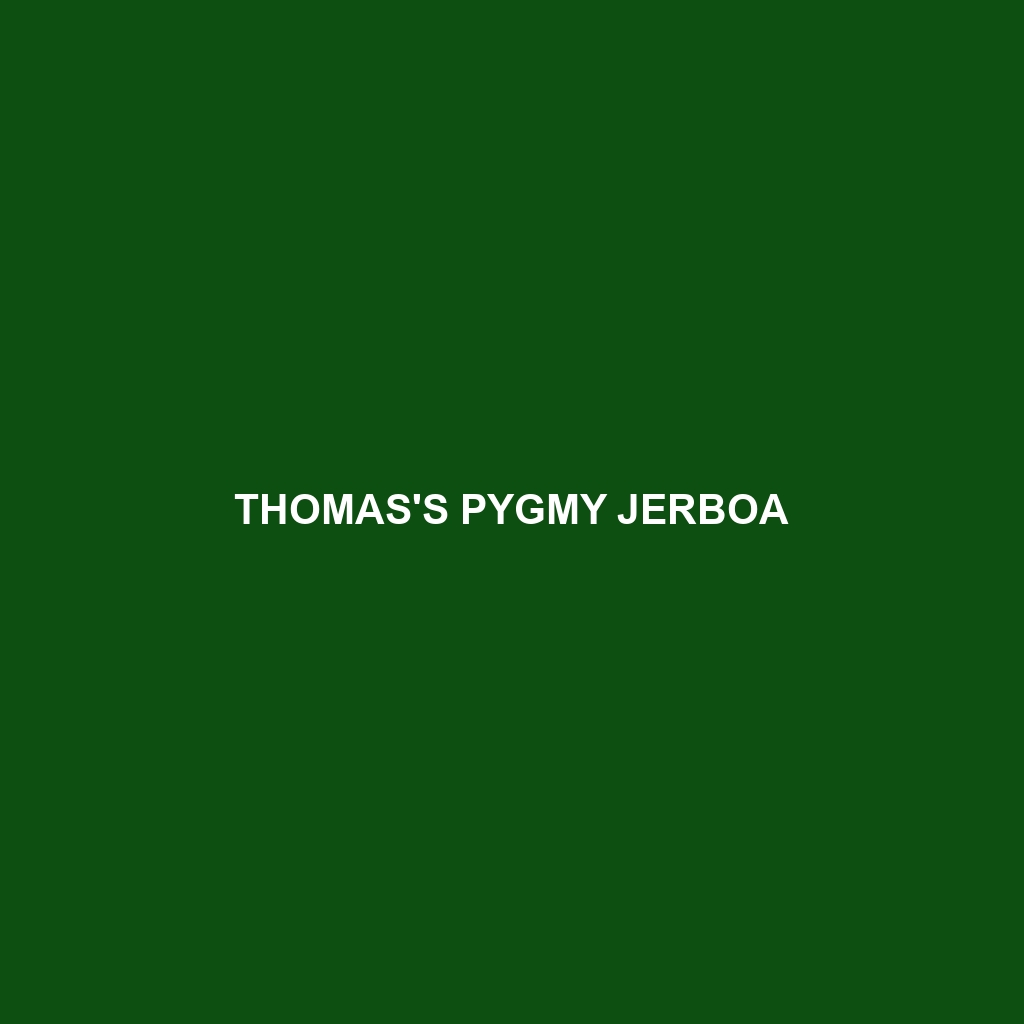Thomas’s Pygmy Jerboa: A Unique Desert Dweller
Common Name: Thomas’s Pygmy Jerboa
Scientific Name: Euchoreutes naso
Habitat
Thomas’s Pygmy Jerboa is primarily found in the arid deserts of Central Asia, particularly in regions of Mongolia and northern China. These small mammals inhabit sandy and rocky environments where they can easily burrow and create shelters. Their habitat is characterized by sparse vegetation and extreme temperature fluctuations, providing a unique ecological niche.
Physical Characteristics
This tiny creature measures approximately 5 to 6 inches in length, with long hind legs adapted for jumping and a short tail. The fur color ranges from light tan to sandy brown, which helps it blend into its desert surroundings. Distinctive features include large eyes adapted for nighttime activities and elongated ears, an adaptation for thermoregulation.
Behavior
Thomas’s Pygmy Jerboa exhibits nocturnal behaviors, becoming active during the cooler nights to forage for food. They are highly agile, using their powerful hind legs to leap across the sandy terrain, and they are known for creating extensive burrow systems to escape daytime heat and predators. Their social structure is generally solitary, although individuals may share burrows occasionally.
Diet
The diet of Thomas’s Pygmy Jerboa primarily consists of seeds, grains, and some vegetation. They also consume insects, which provide essential proteins. Their feeding habits include hoarding food in their burrows to prepare for periods of scarcity, demonstrating their adaptability to a harsh environment.
Reproduction
Thomas’s Pygmy Jerboa typically breeds in the spring, with a gestation period of about 30 days. Females usually give birth to two to four young at a time, which are weaned after a few weeks. Notable behaviors during reproduction include the male’s elaborate courtship displays, which often involve jumping and vocalizations.
Conservation Status
The conservation status of Thomas’s Pygmy Jerboa is currently classified as vulnerable due to habitat loss, climate change, and increased human activity in its native regions. Efforts are underway to monitor populations and protect their natural habitats.
Interesting Facts
One fascinating aspect of Thomas’s Pygmy Jerboa is its remarkable ability to survive without drinking water. Instead, it extracts moisture from the seeds it consumes, showcasing its unique adaptations to desert life. Additionally, this species is considered one of the smallest rodents in the world, making it a subject of interest for researchers studying desert ecosystems.
Role in Ecosystem
Thomas’s Pygmy Jerboa plays a significant role in its ecosystem by aiding in seed dispersal, which contributes to plant community dynamics in arid environments. As both prey and seed dispersers, they are an integral part of the food web, supporting the survival of various desert species.
